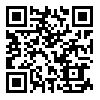مجله رویش روانشناسی از دادن گواهیهای کاغذی معذور است. لطفا تقاضا نکنید. همه گواهی ها در صفحه شخصی کاربران موجود است.
year 13, Issue 4 (summer 2024 2024)
Rooyesh 2024, 13(4): 41-52 |
Back to browse issues page
Download citation:
BibTeX | RIS | EndNote | Medlars | ProCite | Reference Manager | RefWorks
Send citation to:



BibTeX | RIS | EndNote | Medlars | ProCite | Reference Manager | RefWorks
Send citation to:
Farahani F, Fayyaz F. (2024). Designing a social identification model based on the lived experience of adolescent girls. Rooyesh. 13(4), 41-52.
URL: http://frooyesh.ir/article-1-4846-en.html
URL: http://frooyesh.ir/article-1-4846-en.html
1- PhD student in the Department of Psychology, Arak Branch, Islamic Azad University, Arak, Iran.
2- Department of psychology, women research center, Alzahra University, Tehran, Iran. ,f.fayyaz@alzahra.ac.ir
2- Department of psychology, women research center, Alzahra University, Tehran, Iran. ,
Abstract: (628 Views)
The present study was conducted to design a model of social identification based on the lived experience of adolescent girls. The qualitative research method was the type of foundation data. The statistical population of the research included the trained people of the NADA Center (Movement of Imam's Daughters) who were selected in 1402 by purposive sampling. Then the social identity scale was implemented on them and the people who got a very good score considering the theoretical saturation point of 12 people, were subjected to a semi-structured interview. Based on the findings, the social identification pattern includes: causal conditions of growth and purposefulness, background conditions of distance from reality, lack of interpersonal communication skills, personality weakness, lack of identity, Strategies for strengthening social activism, leadership, talent development, skill enhancement, revolutionary role-taking, religious education and insight enhancement were obtained. Also, the intervening factors include the lack of skills to work with teenagers in centers and institutions and the confrontation of the family with the teenager and the consequences including religious and revolutionary role-playing, social activism, social education, and integrated identity. The model of social identification is an example of national, Islamic, and revolutionary identification. This study can be applied practically by governmental and non-governmental organizations and institutions, activists in the field of education, psychologists and counselors active in the field of mental health, and policymakers.
Type of Article: Applicable |
Subject:
Social psychology
Received: 2023/09/16 | Accepted: 2024/03/16 | ePublished: 2024/07/28
Received: 2023/09/16 | Accepted: 2024/03/16 | ePublished: 2024/07/28
Send email to the article author
| Rights and permissions | |
 |
This work is licensed under a Creative Commons Attribution-NonCommercial 4.0 International License. |





